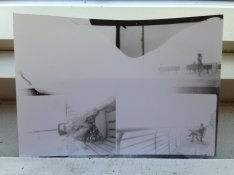graciemansion
Member
I tried last night to make contact prints for the first time, holding a lamp with a 40 watt bulb over the negative and Fomalux 312 paper in a contact print frame. Every print I made (I tried about 5 times) only had one small, bell shaped part of the image exposed. I tried different lamps and bulbs and every time this happened. For the last one, which I included as an attachment, the bell shape part developed under the developer, and then when I put it in the water bath (I use TF4 fixer) the rest of the image appeared hazily. I can't for the life of me figure out why this is.






